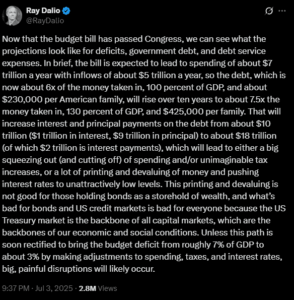
WASHINGTON — Federal Reserve Chair Jerome Powell on Tuesday reaffirmed the central bank’s decision to maintain its key interest rate, opting for a cautious approach as the economic impact of President Donald Trump’s tariffs remains uncertain. Despite persistent pressure from the White House for lower borrowing costs, Powell emphasized the need for patience.
The announcement comes as the U.S. economy grapples with the effects of ongoing trade tensions. Powell’s stance reflects a commitment to data-driven decision-making, prioritizing economic stability over political influence. “We are closely monitoring the implications of trade developments and will act as appropriate to sustain the expansion,” Powell stated during a press conference.
Economic Context and Background
The Federal Reserve’s decision to keep rates steady is set against a backdrop of global economic uncertainty. President Trump has repeatedly called for lower interest rates, arguing that they would bolster economic growth and enhance the United States’ competitive edge. However, Powell and other Fed officials have expressed concerns about the potential for inflation and financial instability if rates are cut prematurely.
Historically, the Federal Reserve has maintained a delicate balance between fostering economic growth and controlling inflation. The current rate, which has been held steady since early 2019, is intended to support a strong labor market and a 2% inflation target.
Expert Opinions and Analysis
Economists are divided on the implications of the Fed’s decision. Some argue that the central bank should heed the administration’s calls for lower rates to counteract the negative impacts of tariffs. Others caution that doing so could lead to overheating the economy.
According to Dr. Lisa Grant, an economist at Georgetown University, “The Fed’s decision to hold rates is prudent given the current economic indicators. Premature rate cuts could lead to asset bubbles and undermine long-term economic health.”
By the Numbers: The U.S. economy grew at an annual rate of 2.1% in the last quarter, while unemployment remains near historic lows at 3.7%.
Historical Parallels and Future Outlook
This development follows a historical pattern where the Federal Reserve has often found itself at odds with presidential administrations. In the early 1990s, then-Fed Chair Alan Greenspan faced similar pressures from the White House to lower rates amid economic challenges.
Looking ahead, Powell indicated that the Federal Reserve would continue to monitor economic data closely. “We remain committed to our dual mandate of maximum employment and price stability,” he reiterated.
Meanwhile, the global economic landscape continues to evolve, with trade negotiations and geopolitical tensions playing significant roles. The Federal Reserve’s next steps will likely depend on the outcomes of these broader economic factors.
As the U.S. approaches the next Federal Reserve meeting, all eyes will be on key economic indicators and any potential shifts in trade policy. The central bank’s decisions in the coming months will be crucial in shaping the economic trajectory of the nation.







